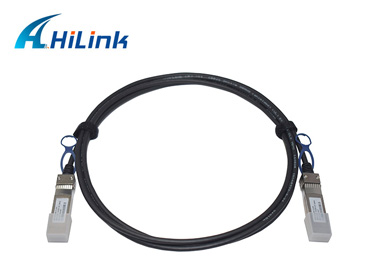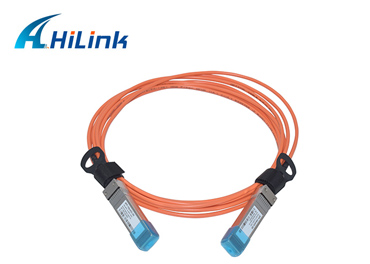What Is the Difference Between 10G DAC and AOC High-Speed Cable?
Aug. 15, 2022
10G DAC high-speed cable and 10G AOC high-speed cable two different, specifically in the following areas.
Anti-electromagnetic interference capabilities: 10G AOC high-speed cable than 10G DAC high-speed cable
Electromagnetic interference (EMI) refers to the interference generated by the external power supply to the circuit. As mentioned earlier, 10G active optical cable contains optical fiber, which is a dielectric that can not conduct electricity. Therefore, AOC high-speed cables are not subject to EMI and can be used in most cases. However, 10G DAC high-speed cables contain copper, which is susceptible to electromagnetic interference because of the nature of copper that transmits electrical signals. In order to avoid system crashes, failures, and a host of other problems, it is important to pay attention to the use of electromagnetic interference environments.
10G SFP+ DAC CABLE
Power consumption: 10G DAC high-speed cable than 10G AOC high-speed cable is small
Typically, 10G AOC high-speed cable power consumption of 1-2W, which is higher than the power consumption of DAC high-speed cable. 10G active DAC high-speed cable power consumption is generally less than 1w, while the passive DAC high-speed cable due to special thermal design, power even 0.15w, can be seen as almost zero power consumption. Therefore, the use of a DAC high-speed cable solution can reduce the operating costs generated by power consumption.
Ambient temperature: 10G DAC high-speed cable than 10G AOC high-speed cable for a wider range
10G DAC high-speed cable power consumption is very low, passive DAC is almost zero power consumption, zero heat. Therefore, DAC high-speed cables are applicable to a wider range of ambient temperatures. Compared to DAC high-speed cable, 10G AOC high-speed cable operating temperature range is limited, but due to greater curvature, may help accelerate airflow cooling.
10G SFP+ Active Optical Cables
Transmission distance: 10G AOC high-speed cable is longer than DAC high-speed cable
The 10G AOC high-speed cable uses fiber optic technology and has a maximum transmission distance of 100m, while the 10G DAC high-speed cable has a maximum transmission distance of 10m (Passive DAC: 7m; Active DAC: 10m). Note that the maximum distance for information transmission via DAC high-speed cable can vary with the data rate. When the rate increases, the transmission distance will be reduced, for example, a 100G DAC high-speed cable can only transmit a maximum of 5 meters.
The transmission distance limitation also reflects the common application of DAC high-speed cable: usually connecting devices located in the same rack, such as connecting a server to a TOR switch. In short, DAC high-speed cable is suitable for short-distance transmission, while AOC high-speed cable is suitable for long-distance networking.
Cost: 10G DAC high-speed cable is lower than 10G AOC high-speed cable
Overall, 10G DAC high-speed cable is less expensive than 10G AOC high-speed cable because 10G DAC high-speed cable has fewer internal components, is relatively simple in structure and is much cheaper to use copper wire than fiber optic material. In other words, when deploying networks in large data centers, the choice of a large number of DAC high-speed cables will save more money than AOC high-speed cable. For short-distance transmission, 10G DAC high-speed cable does provide a more cost-effective solution than AOC high-speed cable, but for long-distance transmission, it is necessary to compare the overall cost of the two solutions.













